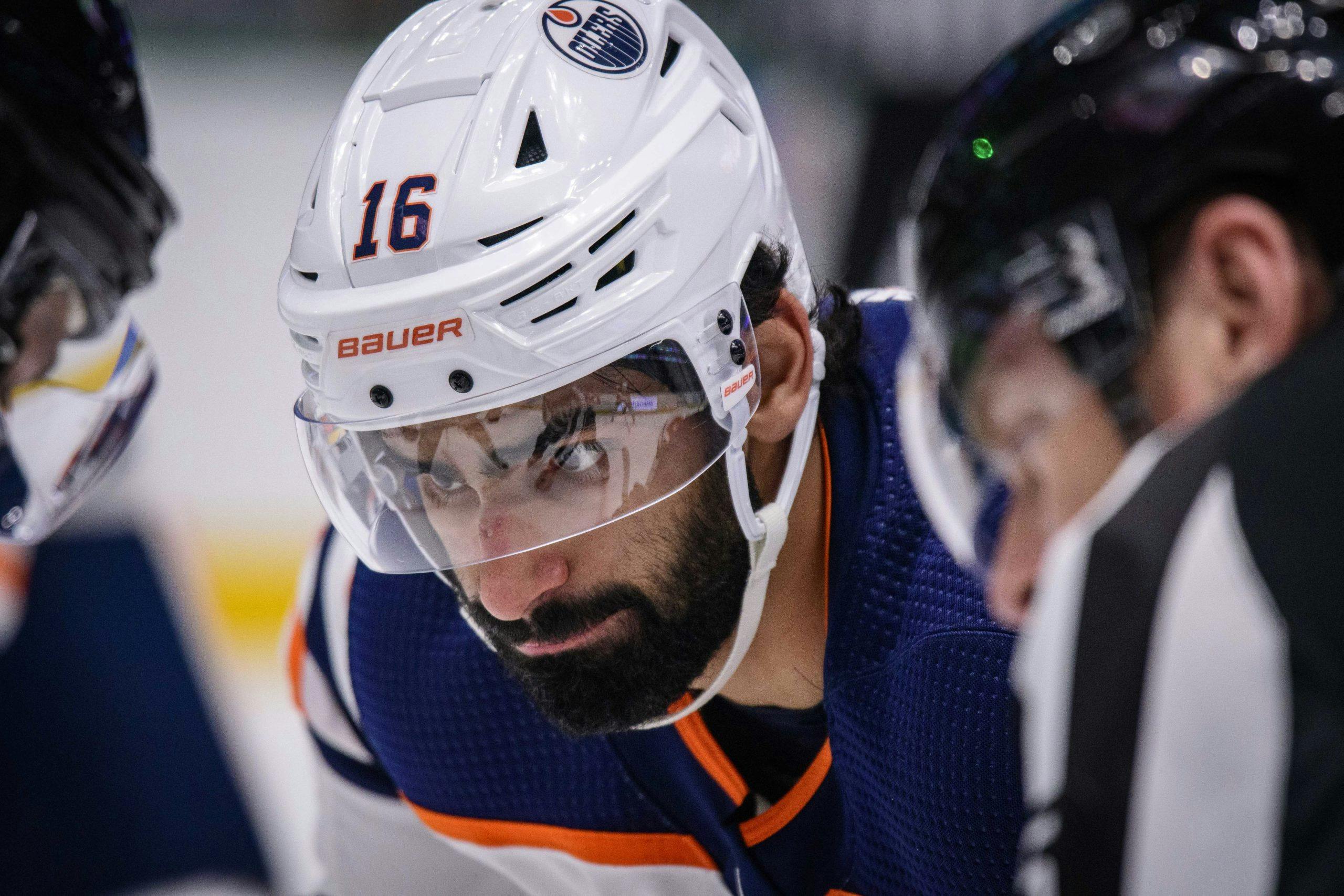The Edmonton Oilers will go as far as Connor McDavid, Leon Draisaitl and Ryan Nugent-Hopkins take them.
Five on five, the Oilers outscore teams 8-5 with McDavid on the ice. More importantly, the Oilers outscore teams 5-1 with Draisaitl on the ice without McDavid. Draisaitl leading one line and McDavid leading another is a recipe for success in Edmonton. Nugent-Hopkins can alternate between whichever center needs help.
Enter the third and fourth lines. The Oilers’ bottom-six being a bigger concern than their top two lines is encouraging in itself. The Oilers haven’t found two lines that can score regularly and stay afloat defensively in years, often relying on overloading the first line with both McDavid and Draisaitl. Those two on separate lines is a step in the right direction.
Unfortunately, even the best forwards can only play so much five-on-five time. McDavid and Draisaitl average 16 and 14 five-on-five minutes respectively.
Take last Sunday’s game against the Winnipeg Jets: that match had 49:17 five-on-five minutes after all the penalties and power plays. McDavid played 19:07, while Draisaitl played 15:07. Meaning the Oilers nicely had either McDavid or Draisaitl, they spent 42 seconds together, out there for nearly 69 percent of the time five-on-five.
Surely the Oilers bottom six can tread water for the remaining 30 percent of the time? Not quite. At all. Since the Oilers top two lines always has one of McDavid, Draisaitl and Nugent-Hopkins, we can see how the Oilers bottom fares without those three stars. It’s not good. In that time without The Big Three, the Oilers have been outscored 13-1. The Oilers bottom-six forwards also get crushed by almost a two-to-one ratio in shot attempts.
If anything, WG's numbers here understate how bad it is.
The bottom 6 let up 5.44 goals / 60 minutes at 5×5.
Ovechkin is scoring at a rate of 5.67 goals / 60 minutes.
When the Oilers play their bottom 6, it's like gifting the opposition with Ovechkin level scoring! https://t.co/q38fs7K0gh
— WheatNOil (@WheatNOil) January 27, 2021
Your bottom two lines scoring one five-on-five goal through eight games is concerning.
Creating a better bottom six, one where they still may not score but at least don’t hemorrhage goals against should be the goal. It starts with Turris, who looks in over his head at third-line centre. The Oilers aren’t flush with centres and moving Nugent-Hopkins off the wing lessens the Oilers attack. Newly signed Devin Shore hasn’t done much better in a reduced role.
Centres on the farm team or taxi squad are either very green or unlikely to move the needle. Ryan McLeod had an okay rookie season in the AHL, but looked much better for EV Zug in the Swiss league before the season began. Cooper Marody had an excellent rookie campaign for the Bakersfield Condors, but took a step back in 2019-20. Counting on rookies isn’t a great strategy, but they can’t be much worse than what Dave Tippett is currently getting from his bottom-six centres. Alan Quine’s played in the NHL, including scoring 18 points in 61 games with the 2016-17 New York Islanders, but expecting more out of him than Turris isn’t a wise gamble.
Tippett should begin by moving Turris to the fourth line. Perhaps Gaetan Haas can provide more at third-line centre when he returns. Add in Tyler Ennis or Joakim Nygard on the left side and Zack Kassian on the right and the Oilers could have a faster, more skilled third line.
Build the fourth line after the third line isn’t such a trainwreck. Maybe that includes a couple of rookies like McLeod or Tyler Benson, but the third line should be the priority while the fourth gets the leftovers.
It’s clear the current bottom-six group isn’t working. Tippett needs to rework those lines and that might mean demoting a veteran or relying on a rookie more. They simply can’t let the third and fourth lines keep getting shelled like they have, giving away all that McDavid, Draisaitl and Nugent-Hopkins create.
For the first time in a while, the Oilers have the makings of two strong forward lines. The bad news, their other two lines are giving it all back and then some.

